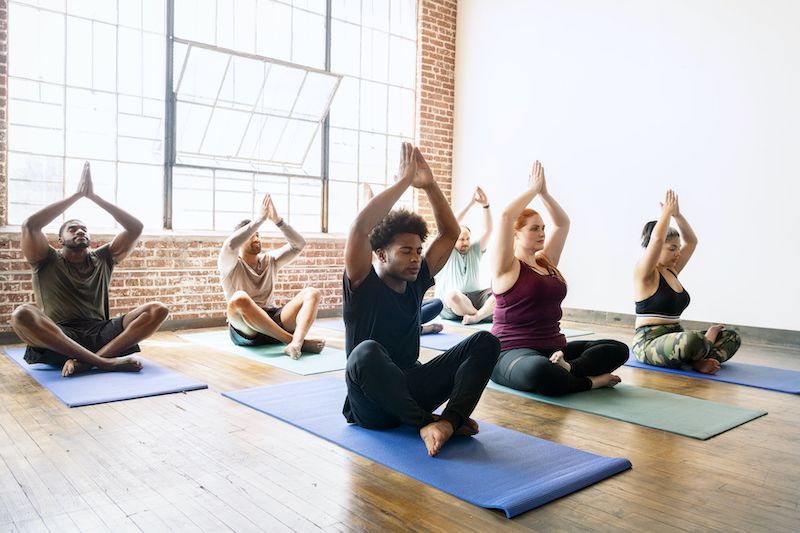Yoga offers numerous benefits, from improving physical health to enhancing mental clarity and emotional balance. Practicing yoga at home allows for greater flexibility and convenience, making it accessible even with a busy schedule. However, consistency can be challenging without the guidance of a studio or instructor. This guide outlines practical tips to help you establish and maintain a fulfilling home yoga practice while staying true to your personal goals.
Why Create a Home Yoga Practice?
Practicing yoga at home empowers individuals to customize their routines, align their sessions with personal schedules, and cultivate self-discipline. A dedicated home practice can save time, eliminate travel stress, and allow for deeper personal introspection without the distractions of a group setting. However, to reap the full benefits, consistency is key, requiring intentional planning and a supportive environment.
What Do You Need to Start a Home Yoga Practice?
Starting yoga at home doesn’t require extensive equipment or a large space. The essentials include:
- A Yoga Mat: A non-slip mat provides comfort and stability.
- Comfortable Clothing: Wear breathable clothes that allow freedom of movement.
- A Quiet Space: Choose a location free from distractions, with enough room to stretch and move.
- Optional Props: Blocks, straps, and bolsters can support various poses and improve flexibility.
- Access to Guidance: Online tutorials, mobile apps, or prerecorded classes can help beginners and advanced practitioners alike.
How to Create a Dedicated Yoga Space?
Having a specific area for yoga helps signal your mind that it’s time to practice. Follow these tips to set up your space:
- Choose the Right Spot: Select a quiet, well-lit corner in your home.
- Keep it Clutter-Free: A clean, minimalistic space enhances focus.
- Add Inspiring Elements: Consider adding candles, plants, or soft lighting to make the area inviting.
- Ensure Accessibility: Keep your yoga mat and props within reach to reduce setup time.
What Are the Best Times to Practice Yoga at Home?
Yoga can be practiced anytime, but certain times offer unique benefits:
- Morning: Ideal for energizing flows and setting a positive tone for the day.
- Afternoon: A gentle session can combat midday fatigue and refresh the mind.
- Evening: Relaxing poses and meditation can help unwind and improve sleep quality.
Choose a time that aligns with your lifestyle and stick to it to build a consistent habit.
How to Develop a Yoga Routine That Works for You?
To create a sustainable home practice, consider these steps:
- Set Clear Goals: Define what you want to achieve, such as improving flexibility, reducing stress, or enhancing strength.
- Start Small: Begin with short sessions, gradually increasing the duration and intensity.
- Follow a Schedule: Treat yoga as a non-negotiable part of your daily routine.
- Mix Styles: Experiment with different types of yoga, such as Hatha for relaxation or Vinyasa for a dynamic flow.
- Incorporate Breathing and Meditation: Include pranayama and mindfulness practices for a holistic experience.
How to Stay Motivated in Your Home Yoga Practice?
Maintaining consistency can be challenging without external accountability. Here’s how to stay motivated:
- Track Progress: Use a journal to record milestones and reflect on improvements.
- Seek Online Communities: Join virtual groups or forums to share experiences and gain inspiration.
- Reward Yourself: Celebrate small achievements to stay encouraged.
- Rotate Routines: Avoid monotony by trying new sequences or poses.
How to Ensure Proper Alignment and Safety at Home?
Without in-person guidance, it’s crucial to prioritize safety:
- Follow Trusted Sources: Use reliable platforms for tutorials to avoid incorrect techniques.
- Practice with Mirrors: Check your alignment to prevent strain or injuries.
- Listen to Your Body: Avoid pushing beyond your limits to maintain a safe practice.
- Seek Feedback: Consider scheduling periodic sessions with an instructor for personalized advice.
How Can Beginners Create a Home Yoga Practice?
Starting yoga as a beginner may feel overwhelming, but these tips can help:
- Focus on Basics: Begin with foundational poses like Downward Dog, Warrior, and Child’s Pose.
- Learn Proper Breathing: Synchronize movements with steady breaths for better flow.
- Use Modifications: Adapt poses to suit your flexibility and strength levels.
- Be Patient: Progress takes time; avoid comparing yourself to experienced practitioners.
What Are the Benefits of a Consistent Home Yoga Practice?
Regular yoga practice offers transformative benefits, including:
- Improved Flexibility: Poses stretch and lengthen muscles.
- Enhanced Strength: Builds core stability and physical endurance.
- Mental Clarity: Breathing techniques and meditation reduce stress and boost focus.
- Convenience: Practice anytime without adhering to studio schedules.
For more structured learning and guidance, you can explore professional yoga classes in Navi Mumbai that complement your home practice.
How to Incorporate Variety into Your Practice?
To keep your practice engaging, consider these ideas:
- Theme Your Sessions: Focus on themes like balance, strength, or relaxation.
- Include Music: Play calming or energetic music to enhance the ambiance.
- Explore Advanced Poses: Gradually challenge yourself with inversions or arm balances.
- Try Partner Yoga: Invite family or friends to join for a shared experience.
How to Overcome Common Challenges in Home Yoga Practice?
- Distractions: Use headphones and set boundaries with household members.
- Procrastination: Schedule yoga sessions and set reminders to stay disciplined.
- Plateaus: Introduce new poses or sequences to maintain progress.
- Lack of Motivation: Revisit your goals and remind yourself of the benefits.
Conclusion
Creating a consistent home yoga practice is both rewarding and manageable with intentional planning. By setting clear goals, establishing a dedicated space, and using available resources, you can seamlessly integrate yoga into your daily routine. Remember, consistency matters more than perfection. Keep evolving your practice to align with your needs, and don’t hesitate to seek professional guidance when required.

